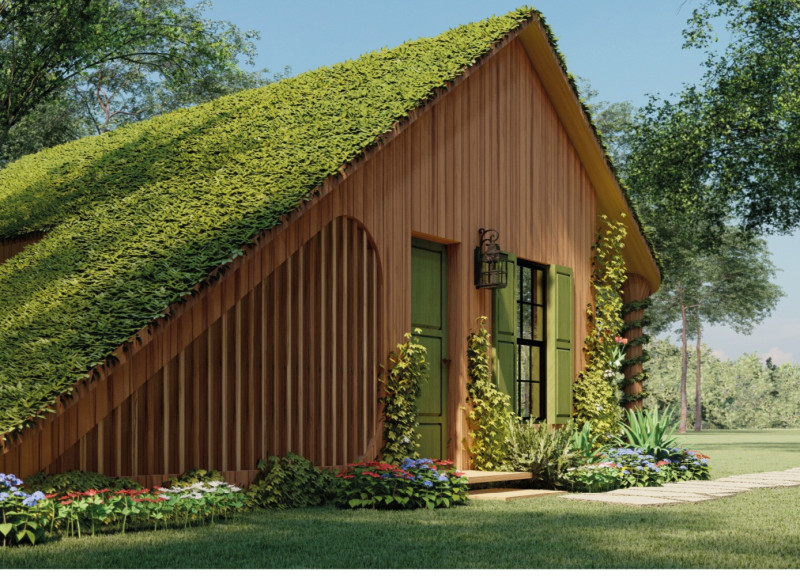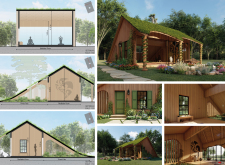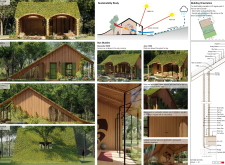5 key facts about this project
Innovative Design Strategies and Cultural Integration
The architectural design employs a hybrid structure combining a glass cube with a wooden cylindrical form. This juxtaposition serves to enhance the cabin's connection to nature while maintaining a minimalist aesthetic. The extensive use of glass walls allows natural light to flood the interior, promoting a sense of openness and minimizing boundaries between the inside and outside environments. In contrast, the wooden elements provide a tactile warmth that resonates with the surrounding landscape.
The cabin's interior features cultural motifs inspired by Maori practices, linking the act of meditation to the region's rich heritage. This attention to cultural detail differentiates the Tiny Kiwi Meditation Cabin from other meditation spaces, as it fosters a deeper understanding and appreciation of New Zealand's indigenous roots.
Sustainability and Functionality
Sustainable practices are central to the design philosophy of the Tiny Kiwi Meditation Cabin. The structure utilizes passive solar heating strategies, optimizing its orientation to capture sunlight throughout the day. This orientation also supports natural ventilation, ensuring comfort without relying on mechanical systems.
The interior layout is thoughtfully arranged to enhance the meditative experience. The meditation room serves as the focal point, featuring unobstructed views and a calming ambiance. Additionally, a private outdoor patio extends the meditative experience to the natural world, providing an area for quiet reflection. The cabin also incorporates a green roof, which not only contributes to thermal performance but also integrates the building within its environment.
The Tiny Kiwi Meditation Cabin stands as an example of functional design merged with cultural sensitivity and environmental responsibility. For a more comprehensive understanding of this project, explore the architectural plans, sections, and detailed designs presented in the project documentation. This exploration will provide further insights into the architectural ideas that make the Tiny Kiwi Meditation Cabin a unique contribution to spaces of contemplation.


























